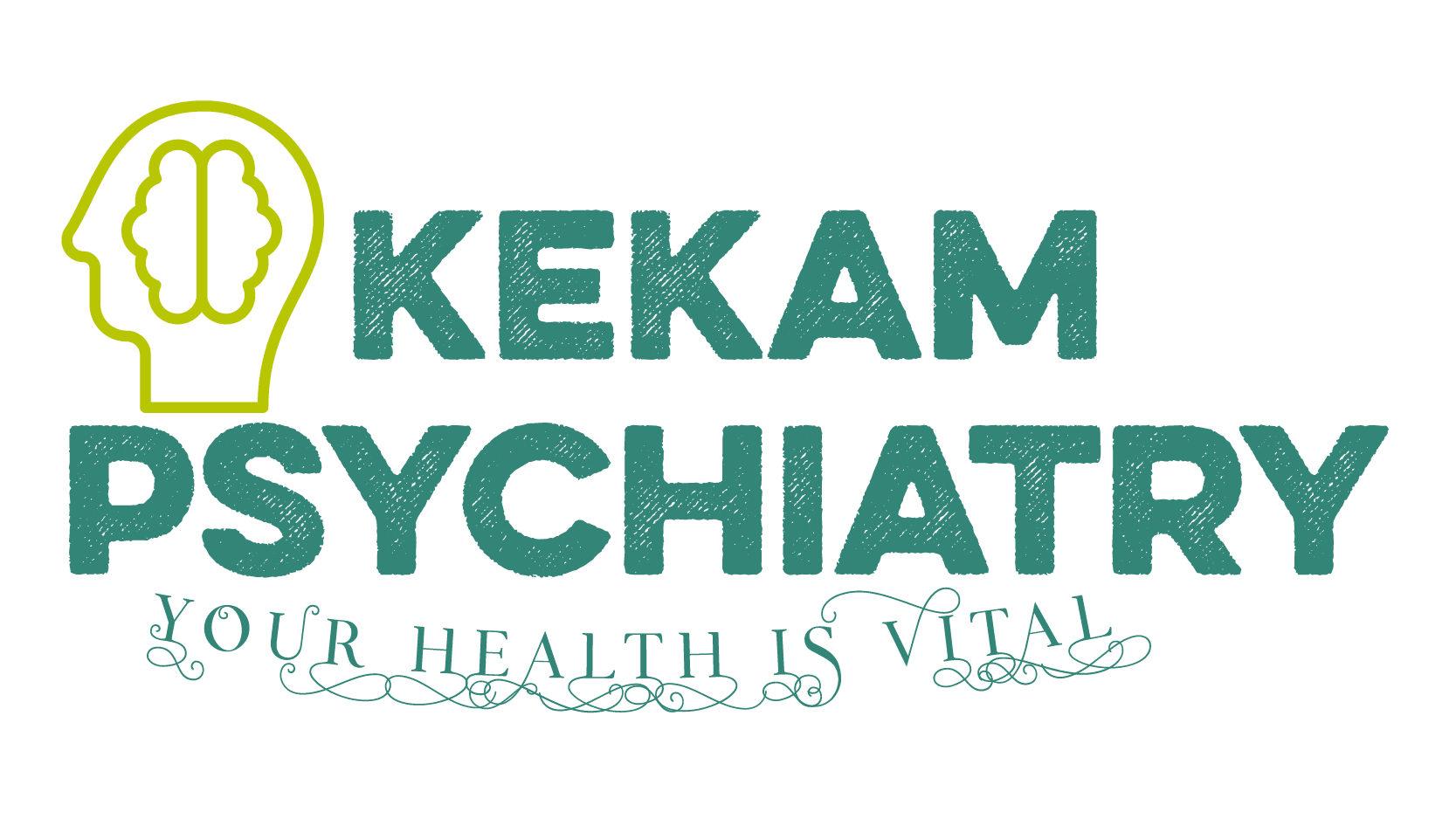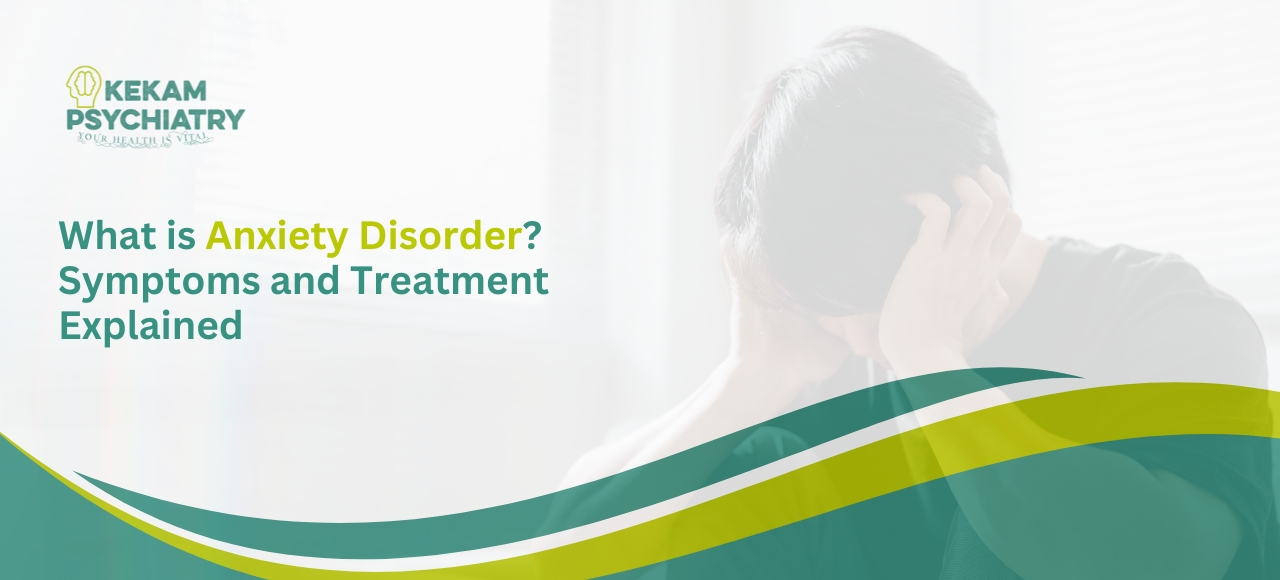Although anxiety is a normal reaction to stress, it may be a sign of an anxiety disorder if it interferes with day-to-day functioning and becomes excessive or chronic. Anxiety disorders affect millions of individuals globally, making it one of the most prevalent mental health issues. But a lot of people don’t identify their symptoms or get the help they need.
To assist you better grasp anxiety disorder, we will go over its definition, signs, causes, kinds, treatment choices, and coping mechanisms in this post. This guide will offer helpful insights whether you’re coping with anxiety yourself or helping someone who is.
What is Anxiety Disorder?
An anxiety disorder is a mental health condition marked by excessive worry, fear, or nervousness that persists over time. Unlike occasional anxiety, which is a normal reaction to stress, an anxiety disorder causes intense and long-lasting distress that can disrupt everyday activities.
How Anxiety Disorder Differs from Normal Anxiety
Normal anxiety is transient and typically associated with a particular circumstance, like a public speech or a job interview. The anxiousness subsides when the incident is over.
However, an anxiety disorder causes:
- Persistent and uncontrollable worry that lasts for months or years
- Physical symptoms like rapid heartbeat, shortness of breath, and dizziness
- Significant interference with work, relationships, and daily life
If anxiety is severe enough to affect daily functioning, it may be classified as an anxiety disorder.
Types of Anxiety Disorders
Anxiety disorders come in different forms, each with its own triggers and symptoms. Let’s explore some of the most common types:
1. Generalized Anxiety Disorder (GAD)
GAD sufferers worry excessively and chronically about a variety of life issues, including relationships, employment, and health. Even in situations when there is no obvious cause for concern, the anxiety frequently outweighs the threat.
Common symptoms:
- Constant restlessness or nervousness
- Difficulty concentrating
- Trouble sleeping
2. Panic Disorder
Recurrent panic attacks, which are abrupt, severe bursts of dread, are a hallmark of panic disorder. These outbursts can last anywhere from a few minutes to many hours and frequently occur without notice.
Symptoms of a panic attack:
- elevated heart rate
- Pain in the chest
- sensation of suffocation or choking
- Fear of dying or losing control
3. Social Anxiety Disorder
SAD is characterized by a severe dread of social situations, sometimes referred to as social phobia. Socially anxious people frequently experience intense self-consciousness and worry about being scrutinized or humiliated in public.
Common symptoms:
- Staying away from social situations
- Shaking and perspiring in public
- Speaking in front of people may be challenging.
4. Specific Phobias
An unreasonable and intense dread of a certain thing, circumstance, or action is called a phobia. Typical phobias include the following:
- Acrophobia – fear of heights
- Claustrophobia – fear of enclosed spaces
- Arachnophobia – fear of spiders
Even though these fears may seem illogical to others, they can cause severe distress for those experiencing them.
5. Obsessive-Compulsive Disorder (OCD)
OCD is an anxiety-related disorder where a person experiences:
- Obsessions – intrusive, unwanted thoughts (e.g., fear of germs)
- Compulsions – repetitive behaviors (e.g., excessive handwashing)
People with OCD feel compelled to perform these actions to reduce anxiety, even though they recognize that their thoughts and behaviors may be irrational.
6. Post-Traumatic Stress Disorder (PTSD)
A stressful incident, such as a war, an attack, a natural disaster, or a major accident, can cause PTSD. It causes intense anxiety and flashbacks that make it difficult for the person to move forward.
PTSD Symptoms:
- Nightmares and flashbacks
- Emotional numbness
- Hypervigilance (being overly alert)
Common Symptoms of Anxiety Disorders
Anxiety can affect people physically, emotionally, and behaviorally.
Physical Symptoms
- Rapid heartbeat
- Sweating
- Trembling or shaking
- Dizziness
- Shortness of breath
- Stomach pain or nausea
Emotional Symptoms
- Constant worry and fear
- Feelings of doom
- Irritability
- Overthinking everything
Behavioral Symptoms
- Avoiding certain situations
- Difficulty concentrating
- Restlessness or pacing
Causes and Risk Factors of Anxiety Disorder
A variety of variables, such as biological, environmental, and psychological effects, might contribute to the development of anxiety disorders.
1. Biological Factors
- Genetics: Anxiety can run in families.
- Neurotransmitters such as dopamine and serotonin are out of equilibrium in the brain.
2. Environmental Factors
- Stressful life events (e.g., divorce, job loss)
- Childhood trauma or neglect
3. Psychological Factors
- Perfectionism and overthinking
- History of other mental health disorders
Diagnosis of Anxiety Disorders
Anxiety disorders are diagnosed through:
- Psychological and clinical evaluations
- The patient’s self-reported symptoms
- Medical examinations to rule out further illnesses
Treatment Options for Anxiety Disorder
1. Therapy and Counseling
Cognitive Behavioral Therapy (CBT)
- Helps identify and change negative thought patterns
- Teaches practical coping strategies
Exposure Therapy
- Helps individuals face their fears gradually
- Reduces avoidance behaviors
2. Medications
Antidepressants (e.g., SSRIs, SNRIs)
- Help regulate mood and anxiety levels
Anti-Anxiety Medications (e.g., benzodiazepines)
- Provide short-term relief, but can be addictive
3. Lifestyle Changes and Natural Remedies
- Regular exercise reduces stress
- Mindfulness and meditation promote relaxation
- Eating a balanced diet improves brain health
Coping Strategies for Anxiety
- Deep breathing exercises
- Journaling thoughts to reduce overthinking
- Engaging in hobbies to distract from stress
- Seeking support from family and friends
When to Seek Professional Help?
You should seek professional help if:
- Anxiety disrupts daily life
- You experience frequent panic attacks
- You have suicidal thoughts (seek help immediately)
Myths and Misconceptions About Anxiety Disorders
Myth: Anxiety is just “overthinking.”
Truth: Anxiety is a real medical condition that requires treatment.
Myth: Avoiding stressful situations will cure anxiety.
Truth: Avoidance makes anxiety worse over time.
Living with Anxiety Disorder
Millions of people successfully manage anxiety through therapy, medication, and self-care. If you’re struggling, you’re not alone—help is available.
Bottom Line:
Despite being widespread, anxiety problems are very treatable. With the right care, support, and lifestyle adjustments, people may take back control of their lives. Seek expert assistance and take action to heal if you or someone you love is experiencing anxiety.


